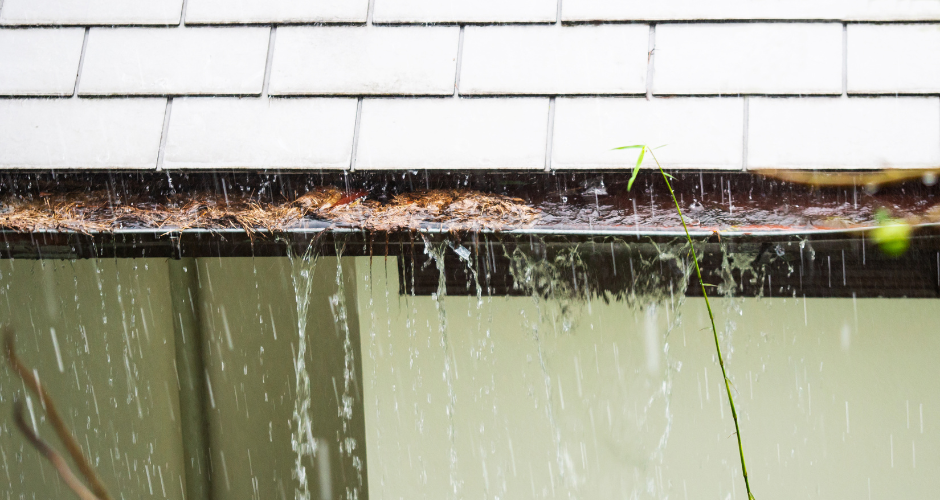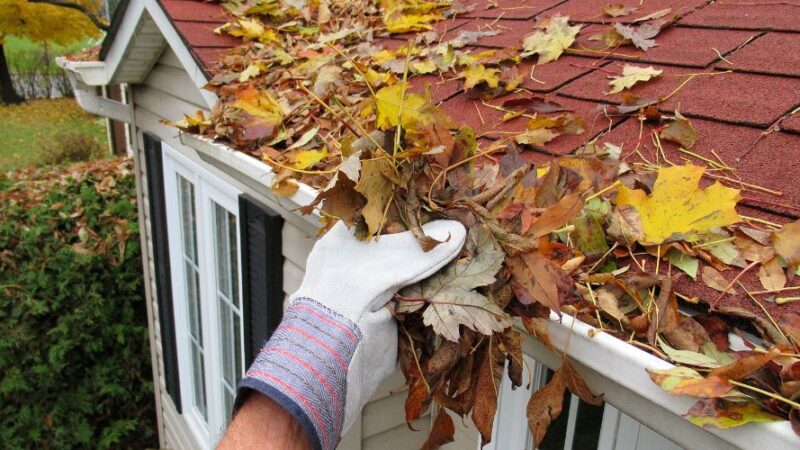How to Prevent Gutter Clogs Before the Rainy Season

Gutters are a crucial part of your home’s drainage system, yet they often go unnoticed until they stop functioning properly—usually during the rainy season when you need them the most. Preventing gutter clogs before the rainy season is vital to avoid potential damage to your home, such as roof leaks, foundation problems, and landscape erosion.
By taking the time to maintain and prepare your gutters, you can ensure they function effectively during heavy rains. This article will cover the best practices for preventing gutter clogs before the rainy season, providing a comprehensive guide for homeowners.
Why Gutter Maintenance Is Important
The purpose of gutters is to direct water away from your roof and foundation. When gutters are clogged, rainwater overflows and pools around the base of your home, which can lead to various problems, including:
- Roof Damage: Water can seep under shingles and cause roof rot.
- Foundation Issues: Excess water can erode the soil around your foundation, leading to cracks and instability.
- Basement Flooding: When water isn’t properly diverted away from your home, it can seep into your basement, causing costly damage.
- Landscape Erosion: Overflowing water can wash away soil and mulch, damaging your landscaping.
Therefore, routine gutter maintenance is essential to keeping your home protected, especially before the rainy season when your gutters will need to handle increased volumes of water.
Step 1: Regular Cleaning
The first and most crucial step in preventing gutter clogs is to keep them clean. Gutters can become filled with leaves, twigs, dirt, and other debris, especially during the fall when trees shed their leaves. Here’s how to keep your gutters clean and clear:
- Biannual Gutter Cleaning: Ideally, you should clean your gutters at least twice a year—once in the spring and once in the fall. This ensures they remain clear throughout the year and prevents any buildup that could lead to clogs.
- Use Proper Tools: To clean your gutters effectively, use a sturdy ladder, a pair of gloves, and a gutter scoop. Remove all debris and flush the gutters with a garden hose to ensure there’s no residual dirt or grime.
- Inspect Downspouts: Check that your downspouts are clear by running water through them. If the water doesn’t flow freely, use a plumber’s snake or a high-pressure hose attachment to remove blockages.
Step 2: Install Gutter Guards
Gutter guards are a protective covering designed to keep debris out of your gutters while allowing water to flow through. These guards come in different styles, such as mesh screens, foam inserts, and reverse curves. Here’s how they help:
- Minimize Debris Buildup: Gutter guards significantly reduce the amount of debris that can enter your gutters, lowering the risk of clogs.
- Less Frequent Cleaning: While you’ll still need to clean your gutters, gutter guards reduce the frequency and intensity of cleanings.
- Easy Installation: Most gutter guards can be installed as a DIY project, or you can hire a professional for a more secure fit.
Installing gutter guards before the rainy season is an excellent long-term investment to prevent clogs and extend the life of your gutter system.
Step 3: Trim Nearby Trees and Branches
Overhanging trees are one of the primary sources of gutter clogs. Leaves, seeds, and branches can easily fall into your gutters, especially during windy or stormy conditions. To prevent this:
- Trim Overhanging Branches: Prune back any branches that hang over your roof or gutters. Not only does this reduce the amount of debris that can fall into your gutters, but it also minimizes the risk of damage to your roof during a storm.
- Maintain Regular Tree Care: Regularly trim your trees and shrubs to keep them from becoming overgrown and contributing to gutter clogs.
By keeping your trees well-maintained, you can reduce the amount of debris that ends up in your gutters, making them less likely to clog before the rainy season.
Step 4: Ensure Proper Slope and Alignment
Gutters that are improperly sloped or misaligned can cause water to pool in certain areas, leading to overflows and potential clogs. To check the slope and alignment of your gutters:
- Check the Slope: Your gutters should have a slight slope toward the downspouts, usually around 1/4 inch for every 10 feet. This allows water to flow freely toward the downspouts instead of pooling in the gutters.
- Adjust if Necessary: If your gutters are sagging or not draining properly, adjust the slope by tightening or loosening the brackets that hold them in place. This ensures that water flows efficiently through the system.
- Look for Gaps: Ensure that your gutters are securely attached to the roofline and that there are no gaps between the gutter and the fascia board.
Proper alignment and slope help prevent clogs and ensure that your gutter system works efficiently during the rainy season.
Why Regular Gutter Cleaning is Crucial for Preventing Costly Home Repairs
Step 5: Inspect for Damage
Before the rainy season hits, it’s essential to inspect your gutters for any signs of damage, such as cracks, holes, or rust. Damaged gutters can leak, leading to water overflow and clogs. Here’s what to look for:
- Cracks and Holes: Use a sealant or gutter patching kit to repair any small cracks or holes in your gutters.
- Rust: If your gutters are showing signs of rust, consider replacing the affected sections with rust-resistant materials, such as aluminum or vinyl.
- Loose Brackets: Ensure that all brackets and hangers are securely fastened to prevent your gutters from sagging or pulling away from the roofline.
Regular inspections help you catch and repair minor issues before they escalate into larger problems during heavy rains.
Step 6: Check the Downspouts
Downspouts play a crucial role in directing water away from your home’s foundation. A clogged or improperly installed downspout can cause water to back up and overflow your gutters. To keep your downspouts in good condition:
- Clear Blockages: Use a hose or plumber’s snake to clear any blockages from your downspouts. This ensures water flows freely through the system.
- Extend Downspouts: Make sure your downspouts extend at least 4-6 feet away from your home’s foundation to prevent water from pooling near the base of your house.
- Check for Leaks: Inspect your downspouts for any leaks or damage and repair them as needed.
Maintaining your downspouts is just as important as maintaining your gutters, as they work together to protect your home from water damage.
Step 7: Schedule Professional Maintenance
While many gutter maintenance tasks can be done by homeowners, scheduling a professional inspection before the rainy season can give you peace of mind that your gutter system is in optimal condition. A professional gutter cleaning service can:
- Thorough Cleaning: Remove all debris from your gutters and downspouts, including hard-to-reach areas.
- Expert Inspection: Identify and repair any issues with your gutters, such as leaks, loose brackets, or improper slopes.
- Preventative Measures: Recommend additional measures, such as installing gutter guards or making adjustments to your gutter system.
Hiring a professional ensures that your gutters are thoroughly cleaned and functioning properly, reducing the risk of clogs and water damage during the rainy season.
Conclusion
Preventing gutter clogs before the rainy season is essential for protecting your home from potential water damage. By following these steps—regular cleaning, installing gutter guards, trimming nearby trees, ensuring proper slope and alignment, inspecting for damage, maintaining downspouts, and scheduling professional maintenance—you can ensure that your gutters remain clear and functional when the rain comes. Taking the time to prepare your gutters now will save you from costly repairs and give you peace of mind during the rainy season.


